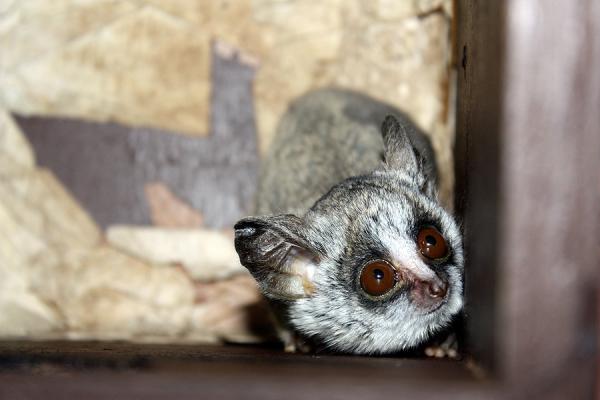Oh, Bush Baby! Zoo Heralds Birth of Rare Primate


A rare bush baby was born at the Cleveland Metroparks Zoo on Nov.15, zoo officials have announced.
Bush babies are small, nocturnal primates that are native to Africa. These animals are exceptional jumpers, have keen night vision and make strange, nighttime cries.
The new infant Mohol bush baby (Galago moholi) is one of fewer than 15 bush babies on exhibit in all of North America. At the Metroparks Zoo, the infant joins one of the country's largest collections of prosimians (along with lemurs, lorises and tarsiers) primates that are not monkeys nor apes .
The unnamed bush baby is the offspring of mother Yetty and father Yaupon, one of only four breeding bush baby pairs in North America. The parents came to Cleveland from Woodland Park Zoo in Seattle when their nocturnal exhibit was closed.
"Cleveland Metroparks Zoo is dedicated to nocturnal prosimians, and to using research and different husbandry techniques to contribute to the body of information about bush babies and increase their numbers," said Chris Kuhar, curator of primates and small mammals at the zoo. "We're very lucky to have this baby here, and while he spends most of his time in the nest box, he gets bolder and ventures out more every day."
Some of the nocturnal prosimian research at the zoo involves testing the effects of light on the health of the animals. One of the graduate-level research projects under way checks melatonin levels in the prosimians' saliva. This will help zoo staff to determine if nocturnal exhibit lighting levels promote healthy amounts of sleep. The results of this study could help zoos around the world adjust the lighting in their nocturnal exhibits and improve the health of their animals.
The zoo's three Mohol bush babies share a mixed nocturnal exhibit with two pottos (a small prosimian with thick, wooly fur related to the loris) and three giant elephant shrews.
Get the world’s most fascinating discoveries delivered straight to your inbox.
- Zoo's Africa Exhibit Provides Sanctuary for White Rhinos, Chimps
- Zoo's New Exhibit Shows Plight of Asian Elephant
- Image Gallery: Endangered and Threatened Wildlife






